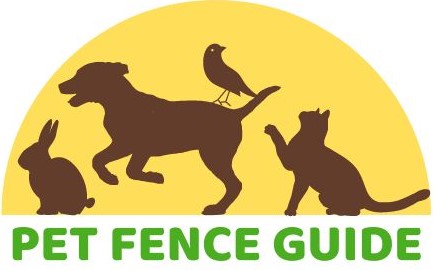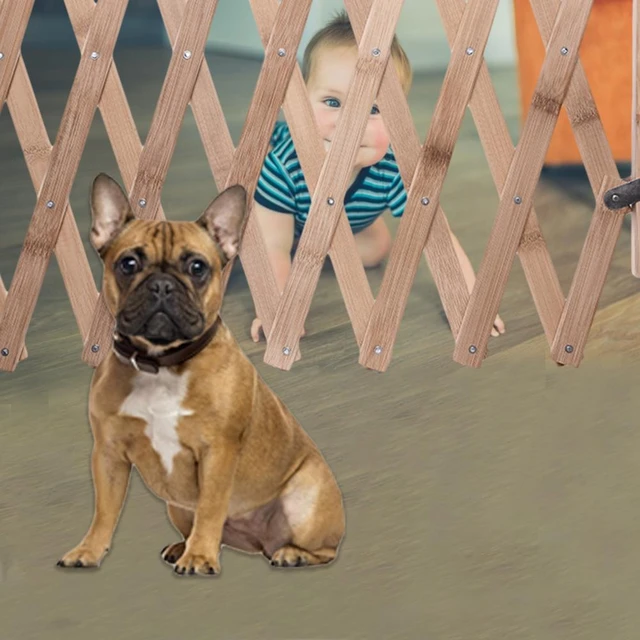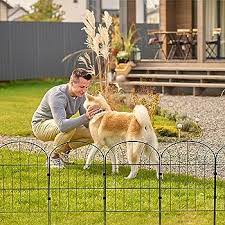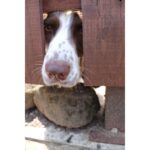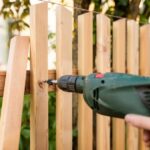In a world full of wagging tails and wet noses, the safety and well-being of our beloved canine companions take center stage. One key element that plays a crucial role in ensuring their security is the dog fence barrier. This comprehensive guide will walk you through everything you need to know about dog fence barriers, from the various types to installation, training, and much more. If you’re a dog owner or considering becoming one, this article is your roadmap to creating a safe haven for your furry friend.
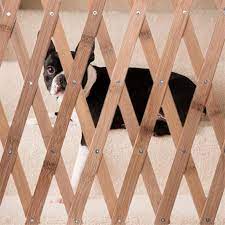
Types of Dog Fence Barriers
Table of Contents
ToggleTraditional Fences
Ensuring the safety and well-being of your four-legged family member is a top priority for every pet owner. Dog fence barriers come in various forms, each offering a unique blend of benefits. In this section, we’ll explore three primary types of dog fence barriers: traditional fences, electric fences, and invisible fences, providing you with a comprehensive understanding of your options.
Traditional Fences: Timeless and Reliable
The most familiar type of dog fence barrier is the traditional fence. These fences can be crafted from various materials, including wood, vinyl, metal, or other sturdy options, and are designed to create a visible and physical boundary for your dog.
Traditional fences have stood the test of time as a classic and reliable solution for containing pets. They offer several advantages, such as:
Security: Traditional fences are known for their robust construction, providing a high level of security for your dog. They create a tangible barrier, ensuring your pet remains within the designated area.
Visibility: One of the primary benefits of traditional fences is their visibility. You can easily monitor your dog’s activities, and they can enjoy an unobstructed view of their surroundings. This clear demarcation of space contributes to a sense of safety and comfort for your pet.
Versatility: Traditional fences come in a variety of materials and styles, allowing you to choose one that complements your property’s aesthetics. Whether you prefer the timeless charm of a wooden fence or the durability of metal or vinyl, you can find a traditional fence to suit your preferences.
Durability: Properly maintained traditional fences can last for many years, making them a long-term investment in your dog’s safety and happiness.
Electric Fences: Modern and Effective
Electric dog fence barriers represent a modern and innovative approach to pet containment. These systems utilize advanced technology to set and maintain your dog’s boundaries without the need for a visible physical barrier.
Here’s how electric fences work:
Buried Wire: An electric fence system typically involves a buried wire that outlines the boundaries of the designated area. This wire remains hidden underground, ensuring it doesn’t disrupt the aesthetics of your yard.
Warning Signals and Corrections: Your dog wears a specialized collar equipped with a receiver. As your dog approaches the predefined boundary, the collar emits a warning signal, often in the form of a beep or vibration. If your pet continues to approach the limit, a mild static correction is administered.
Electric fences offer several advantages:
Invisible Boundaries: The primary benefit of electric fences is their invisibility. They provide an effective means of containment while preserving the unobstructed view of your property.
Customization: Electric fence systems allow you to customize the boundaries to suit your specific requirements. This adaptability is particularly useful if you have irregularly shaped or expansive outdoor spaces.
Effectiveness: When used correctly and in conjunction with proper training, electric fences are highly effective at keeping your dog within the set boundaries.
Aesthetic Appeal: Electric fences maintain the visual integrity of your property, as there are no physical structures to obstruct the view.
Invisible Fences: Aesthetics and Control
For those who prefer an even more discreet approach to pet containment, invisible fences provide a compelling solution. These systems use radio signals to establish an unseen boundary for your dog.
How invisible fences work:
Radio Signals: An invisible fence relies on radio signals to create a virtual boundary. This boundary is defined during the system’s installation, allowing for precise customization.
Warning Tones and Static Corrections: Your dog wears a collar with a receiver that communicates with the radio signals. When your pet approaches the set boundary, the collar emits a warning tone. If your dog continues to move closer, a mild static correction is delivered.
Invisible fences offer a unique set of benefits:
Aesthetics: These fences are entirely hidden from view, preserving the natural beauty of your property.
Customizable Boundaries: You have the flexibility to tailor the boundaries to your property’s specific layout, allowing your dog to enjoy the maximum space available.
Effective Containment: Invisible fences, when used in conjunction with appropriate training, provide effective containment without any physical structures.
Aesthetic Advantage: The absence of visible fences enhances the aesthetic appeal of your property while maintaining control over your pet’s movements.
In conclusion, understanding the various types of dog fence barriers is crucial for selecting the most suitable solution for your pet’s needs and your property. Whether you opt for a traditional fence, an electric fence, or an invisible fence, each option offers unique advantages, ensuring your dog’s safety and well-being while preserving the aesthetics of your outdoor space.
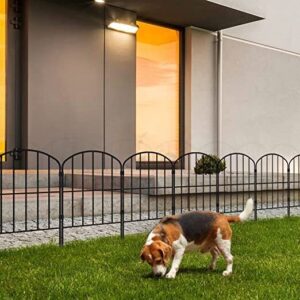
Benefits of Using Dog Fence Barriers
When it comes to ensuring the safety and well-being of your canine companion, dog fence barriers play a pivotal role. These ingenious systems provide numerous benefits that enhance the quality of life for both you and your furry friend. Let’s take a closer look at the advantages of using dog fence barriers:
Safety: Protecting Your Precious Pooch
The safety of your furry friend is paramount. A dog fence barrier acts as a guardian, ensuring that your pet stays within the designated area and doesn’t wander into unsafe zones. This is particularly vital in residential areas where busy streets, unpredictable vehicles, and potentially hostile neighboring properties pose a real threat. With a dog fence barrier in place, you can experience true peace of mind, knowing that your beloved pet is shielded from harm’s way.
Containment: The Freedom to Frolic
Dogs are inherently playful creatures that require ample space to exercise and indulge in their natural instincts. Without a proper containment solution, they may wander off, getting lost or engaging in activities that put them in harm’s way. A dog fence barrier provides your pet with a designated and secure space to frolic and explore, ensuring they get the exercise and stimulation they need. This containment not only safeguards your pet but also preserves your neighbors’ peace and property from unexpected visits.
Training: Nurturing Good Behavior
Training your dog is a rewarding but challenging endeavor. A dog fence barrier simplifies this process by reinforcing boundaries and encouraging obedience. The clear visual and physical demarcation of your pet’s territory helps them understand where they should play and roam freely. With proper training and positive reinforcement, your dog learns to respect these boundaries, making your life easier and enhancing their safety. Moreover, a well-trained dog is a joy to be around, fostering a harmonious relationship between pet and owner.
Peace of Mind: A Serene Living Environment
A dog fence barrier not only protects your pet but also promotes a peaceful living environment for you and your family. You can enjoy your outdoor space without the constant worry of your dog wandering off, disturbing neighbors, or running into hazardous situations. The knowledge that your furry friend is safe and content within their designated area allows you to relax and relish your time together.
Neighborhood Harmony: Considerate Pet Ownership
Responsible pet ownership entails respecting your neighbors and the community you live in. A dog fence barrier helps you maintain a harmonious relationship with those around you. Your dog’s containment minimizes the chances of conflicts with neighbors, whether due to unauthorized visits or incessant barking. By being a considerate pet owner and investing in a dog fence barrier, you contribute to the positive atmosphere in your neighborhood.
Preservation of Property: Protecting Your Assets
Beyond safety and neighborhood harmony, dog fence barriers can help protect your property. Dogs are naturally curious, and their playful nature might lead to unintended damage to your garden, landscaping, or outdoor amenities. A well-defined space created by a dog fence barrier serves as a safeguard, ensuring that your property remains intact and aesthetically pleasing.
In conclusion, dog fence barriers offer an array of advantages that extend beyond the safety of your pet. They create a peaceful living environment, promote responsible pet ownership, and safeguard your property. By investing in a dog fence barrier, you not only enhance your pet’s well-being but also contribute to a harmonious neighborhood and maintain the integrity of your property.
Factors to Consider Before Choosing a Dog Fence Barrier
Selecting the ideal dog fence barrier is a decision that warrants thoughtful consideration. Your choice should align with your specific needs and, most importantly, cater to the safety and well-being of your four-legged family member. Here are some key factors to keep in mind when embarking on this important journey:
Your Dog’s Size and Breed
It’s crucial to recognize that not all dogs are created equal. Your dog’s size and breed play a pivotal role in determining the most appropriate type of barrier for their specific needs. Each breed comes with its unique characteristics and requirements, and what works for a small dog may not be suitable for a larger, more energetic breed.
For instance, a petite Chihuahua might require a different type of fence than a robust German Shepherd. Smaller dogs may be more agile and find ways to slip through narrow gaps, while larger breeds need taller and sturdier barriers to prevent them from jumping over or breaking through. Understanding your dog’s size and breed is the first step in tailoring your choice to their needs.
Property Size and Layout
The layout of your property is another critical aspect to consider when choosing a dog fence barrier. The size and shape of your yard, garden, or outdoor space will significantly influence the type of fence that suits your needs.
For instance, if you have a vast, open property with a sprawling yard, you may need a fence that can cover a more extensive area. On the other hand, if your outdoor space is compact and tightly configured, a different style of fence may be more appropriate. The fence should seamlessly integrate into your property, providing the desired level of containment while complementing the aesthetics of your surroundings.
Budget
Budget considerations are essential when selecting a dog fence barrier. Different types of dog fence barriers come with varying costs, and it’s crucial to align your choice with your financial plan.
Traditional fences, while reliable and visually appealing, may be more expensive due to materials and installation costs. Electric fences and invisible fences, on the other hand, offer more cost-effective solutions. Still, the total expense may vary depending on factors such as the size of your property and whether you choose professional installation.
It’s important to establish a budget that you’re comfortable with and explore the available options within that financial framework. While it’s tempting to opt for the most cost-effective solution, it’s equally important to prioritize the safety and well-being of your pet. Consider your budget as an investment in your dog’s security and happiness, and aim to strike a balance between affordability and effectiveness.
In conclusion, selecting the right dog fence barrier involves a thoughtful evaluation of your dog’s size and breed, your property’s layout, and your budget. By considering these key factors, you can make an informed decision that ensures the safety and well-being of your beloved pet while seamlessly integrating with your property. Remember that choosing the right dog fence barrier is a decision that benefits both you and your furry friend, providing peace of mind and the freedom to enjoy your outdoor space to the fullest.
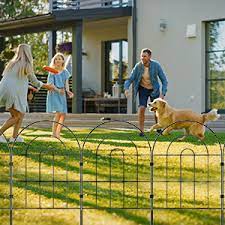
Training Your Dog with a Fence Barrier
Introducing a dog fence barrier is not just about setting up a physical boundary; it’s also about teaching your canine companion to respect those limits. Proper training is an essential step in ensuring that your dog understands and complies with the boundaries set by the fence. In this section, we’ll delve into the significance of training, the techniques involved, and how to foster a positive and cooperative relationship with your pet.
The Significance of Training
Training your dog to respect the boundaries of the fence is of utmost importance. It ensures the safety and well-being of your furry friend, preventing them from wandering into potentially dangerous areas. Proper training also minimizes the risk of your dog escaping, getting lost, or engaging in unwanted behavior.
Training goes beyond just physical safety; it fosters discipline and obedience in your pet. This, in turn, strengthens your bond and communication with your dog. When your dog understands the boundaries and obeys commands, it creates a harmonious living environment for both of you.
Techniques for Training
Effective training involves a combination of techniques and consistent effort. Here are some valuable strategies to help you train your dog with a fence barrier:
Start Early: If possible, begin training when your dog is still a puppy. Puppies are more receptive to learning and tend to adapt quickly to new environments and rules.
Positive Reinforcement: Use positive reinforcement techniques to reward your dog for good behavior. When they stay within the boundaries, offer treats, praise, or affection. These rewards serve as an incentive for your pet to comply.
Consistency: Be consistent in your commands and expectations. Use clear and concise language to communicate with your dog. If you have multiple family members, ensure everyone follows the same training rules to avoid confusion.
Supervision: Initially, closely supervise your dog when they are in the fenced area. Watch for any attempts to breach the boundary and intervene if necessary. Gradually, as your dog becomes accustomed to the fence, you can reduce direct supervision.
Training Aids: Some dog fence systems come with training aids, such as flags that demarcate the boundaries. These visual cues help your dog understand the limits more easily.
Gradual Introduction: When introducing your dog to the fence, do it gradually. Allow them to explore the area with the fence active while using a leash. This way, they can associate the fence with the boundaries.
Patience: Training takes time and patience. Avoid scolding or punishing your dog for boundary violations, as it can create fear or confusion. Instead, focus on positive reinforcement and gentle correction.
Professional Guidance: If you’re unsure about training your dog with the fence barrier, consider seeking professional help. Dog trainers can provide guidance and hands-on training for both you and your pet.
Building a Positive Relationship
Training your dog with a fence barrier is not just about boundaries; it’s about nurturing a positive and cooperative relationship. Spend time with your pet, engage in play, and create a strong bond based on trust and affection. When your dog associates the fence with safety and positive experiences, they are more likely to respect the boundaries willingly.
In conclusion, training your dog to respect the boundaries of a fence barrier is an essential part of responsible pet ownership. It ensures your dog’s safety, fosters obedience, and strengthens your relationship. By employing effective training techniques, practicing consistency, and providing positive reinforcement, you can create a harmonious and secure environment for your furry friend to thrive.
Common Mistakes to Avoid
When it comes to implementing a dog fence barrier, there are several common mistakes that pet owners should steer clear of. Avoiding these pitfalls is crucial to ensure the success of your pet containment system and to keep your furry friend safe and secure. Let’s take a closer look at some of the common mistakes and how to prevent them.
Incorrect Installation
One of the most prevalent mistakes is the incorrect installation of the dog fence barrier. Whether you’re installing a traditional fence, an electric fence, or an invisible fence, proper installation is key to its effectiveness. Incorrectly placed wires, misaligned boundaries, or poorly anchored posts can lead to gaps or vulnerabilities in the barrier. To avoid this mistake, it’s essential to carefully follow the manufacturer’s instructions or seek professional installation.
Inconsistent Training
Inconsistent training is another error that can compromise the effectiveness of a dog fence barrier. Training your dog to respect the boundaries should be a continuous and consistent process. Failing to reinforce the rules, relying solely on the fence without training, or not maintaining a consistent communication style can lead to confusion for your pet. To prevent this mistake, establish clear training routines, use positive reinforcement, and ensure that all family members follow the same training protocols.
Selecting the Wrong Type of Fence
Choosing the wrong type of fence for your dog’s needs is a significant misstep. Not all dogs are the same, and their requirements may vary based on factors such as size, breed, and temperament. For instance, an electric fence may not be suitable for a highly energetic and determined escape artist. Selecting a fence without considering these factors can result in your pet breaching the boundaries. To avoid this mistake, conduct thorough research, consult with professionals if needed, and select a fence type that aligns with your dog’s characteristics and behavior.
Lack of Maintenance
Neglecting the maintenance of your dog fence barrier is a common mistake that can lead to malfunctions and safety issues. Over time, wires may break, collars may malfunction, or batteries may run out. Regular maintenance is essential to ensure that the system functions correctly and reliably. Create a schedule for checking the components of your dog fence, replace worn-out parts, and keep the system in optimal condition.
Alternatives to Traditional Dog Fence Barriers
While traditional dog fence barriers are effective, they may not be suitable for every situation or every dog. If a traditional fence doesn’t align with your needs, there are alternative methods to consider for keeping your dog safe and contained. Let’s explore some valid alternatives to traditional dog fence barriers:
Leash Training
Leash training is a valuable alternative, especially if you have a smaller yard or live in an area with specific regulations against traditional fences. It involves walking your dog on a leash and training them to respond to your commands, ensuring they stay within the desired boundaries. Leash training provides direct control and allows you to enjoy outdoor activities with your pet.
Outdoor Pens
Outdoor pens, also known as exercise pens or playpens, are versatile alternatives to traditional fences. They offer a designated and secure space for your dog to play and roam freely. These pens come in various sizes and materials, providing flexibility for different needs. Outdoor pens are especially beneficial for puppies or dogs that require a controlled environment.
Supervision
Supervision is a simple yet effective alternative. It involves keeping a close eye on your dog when they are outdoors. While it may not be a permanent solution, it ensures your pet’s safety, especially in unfenced areas. Supervision is essential for dogs that are in the training phase or in locations where other containment methods may not be feasible.
In conclusion, avoiding common mistakes in the installation, training, and selection of dog fence barriers is crucial for their effectiveness. By conducting proper research, following manufacturer instructions, and maintaining consistency in training, you can ensure the success of your pet containment system. Additionally, considering alternatives such as leash training, outdoor pens, and supervision can be valuable options when traditional fences don’t meet your specific needs. Selecting the right method for your dog’s safety and happiness is a testament to responsible pet ownership.
Conclusion
In conclusion, choosing the right dog fence barrier is a significant decision for any dog owner. The safety, containment, and training benefits it offers can enhance the quality of life for both you and your pet. By considering all the factors, avoiding common mistakes, and exploring alternative options, you can create a secure and comfortable environment for your furry friend.
